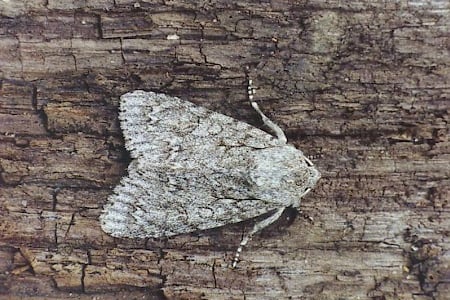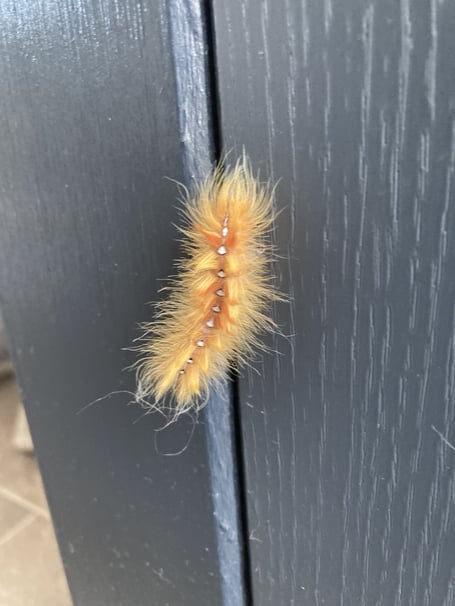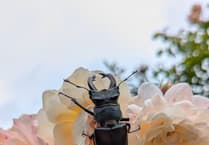
Reader George Still kindly shared her photos of the very hairy caterpillar she saw in her kitchen. George explained that she checked her moth book, which confirmed it as the caterpillar of a sycamore moth.
As the name implies, it feeds on sycamore trees, but also on horse-chestnuts and field maples. She added: “I live off White Rose Lane, part of the conservation area to the south of Woking town centre.
“I’ve no idea how long the caterpillar had been in the kitchen or how it came into the house, but it has now been rehomed in the garden.”
As George’s photo shows, Sycamore moth caterpillars are brightly coloured and very distinctive, with yellow and orange hairs and a row of black-edged white spots along its back. However, the adult moth has subtle brown markings on a background that varies from pale grey to dark sooty-grey – a perfect camouflage against tree bark.
If you are interested in moths, the UKMoths web site is a must see. It was founded by moth enthusiast Ian Kimber with the ultimate aim of listing and illustrating as many species of British moths as possible – not just the large moths (“macro moths”) that moth field guides have traditionally concentrated on, but also the many “micro moths”.
Ian built, runs and maintains the UKMoths website himself, adding: “Thanks to many contributors who provide photos and information.”
He says over 2,500 moth species have been recorded in the British Isles, and currently 2,283 of these are illustrated on UKMoths, which features 7415 photographs.
Scrub clearance
Among the many types of habitat for nature in our area is chalk (calcareous) grassland, characterised by well-drained, open soil, typically in a sunny position. These nutrient-poor conditions are ideal for a spectacular array of flora and fauna.
The best place to see chalk grassland near to us is Pewley Down, part of the North Downs – the chalk ridge that stretches from Farnham to Dover.
I’m amazed on every visit to the Pewley Down Nature Reserve (entrance at the end of Pewley Hill, GU1 3SP) how many species of plant can be seen. According to Surrey Wildlife Trust, the North Downs chalk grassland has as many as 40 plant species in every square metre, so it is vastly more biodiverse than any other type of grassland in the country.
About 500m to the east of the Pewley Down Reserve is Rosamund Meadows, a four-hectare site of species-rich chalk grassland and scrubland, next to the Rosamund Community Garden in Longdown Road (GU4 8PP).
It is necessary to remove any scrub that encroaches on the precious chalk grassland.
At Rosamund Meadows, Surrey Wildlife Trust has trialled a bespoke excavator attachment to remove the scrub, including removing associated roots, and reprofiling the site into a habitat mosaic of scrub of various ages with crucial areas of open species-rich chalk grassland.
Surrey Wildlife Trust said: “Over the years we expect this to improve the ability of the trust’s conservation grazing cattle to access and effectively graze the area, thus boosting floral abundance and diversity within the sward and creating better habitat for invertebrates, reptiles and skylarks. Orchids are already appearing in the areas cleared.”
Disturbance to soil was minimal, but the areas of bare ground created will create nesting opportunities for solitary bees and wasps and basking areas for butterflies.
It’s an excellent outcome, achieved without using herbicide chemicals that are harmful to wildlife and humans.





Comments
This article has no comments yet. Be the first to leave a comment.